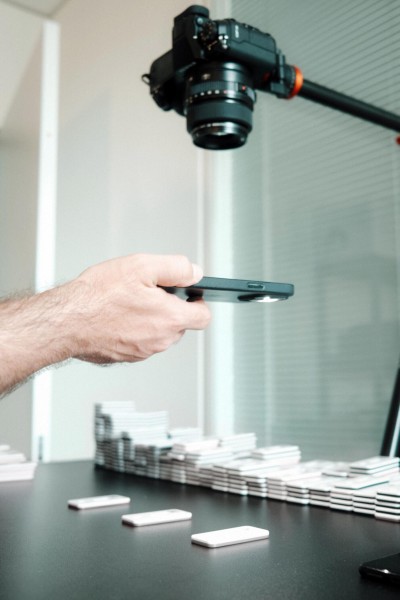Turn your smartphone into an LFA reader
The Flowify AI mobile app is available for Android and iOS and transforms a smartphone into a reader device for rapid tests. A proprietary and lightweight image analysis algorithm that is run directly on the smartphone evaluates rapid tests automatically and instantly.
App workflow
The app assists users during the test execution through various measures, thereby ensuring that all steps are performed according to the test instructions, granting precise and valid test results. These results are then automatically digitized and persisted, and can be easily shared if desired.

1. Test selection & registration
The app contains a list of all tests of a manufacturer. The user can select a specific test and proceed to scanning. Alternatively the type of the test can automatically detected if an identifier is present on the test (e.g. a barcode).
Additional quality controls can check if the test is new and valid or used, expired or recalled by the manufacturer. Moreover, the test user can enter additional information like a sample identifier (e.g. name of a person).
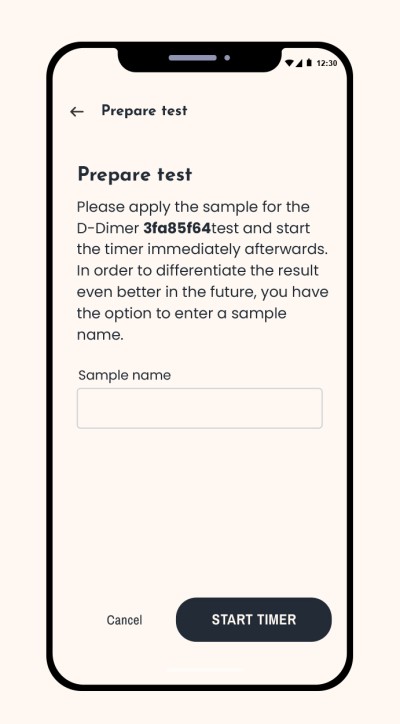
2. Test preparation
Once a test is registered, the user can start the test execution which includes obtaining the sample and placing it onto the test. The app can provide an explanation of all necessary steps if desired.
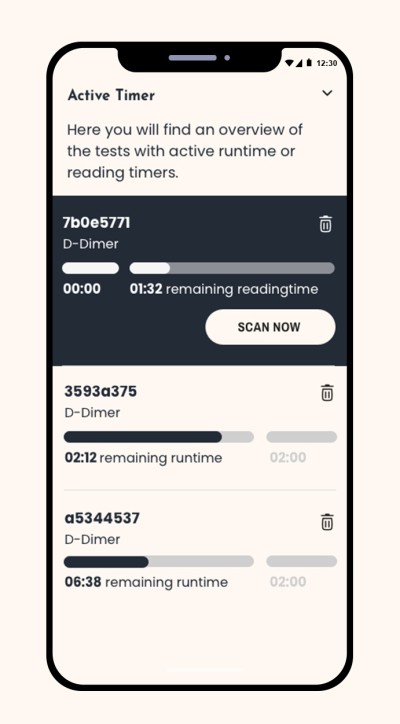
3. Timer
After the sample is dropped onto the test, the user needs to start the timer. The timer ensures that the user respects the incubation time of the test. After the incubation time is expired, the app alerts the users and a countdown for the reading time will be started. This allows to check if the test is evaluated within the designated time.
An additional multi-timer feature allows professional users to execute several tests in sequence without the need to wait for the first to be evaluated.
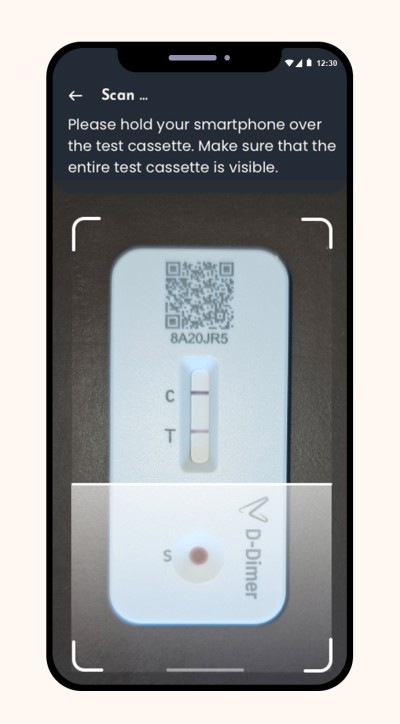
4. Scan process
After the timer expires, the test is scanned. During scanning, the algorithm aids the user by analyzing the camera stream, offering placement recommendations, and checking background and lighting suitability. This automated interpretation reduces human errors and clarifies visual results by precisely detecting cut-offs. It easily handles complex tests to prevent parameter mix-ups.
The test evaluation occurs on the smartphone and can scale for simultaneous evaluations. The solution functions in remote areas without an internet connection and ensures data privacy by eliminating the need for cloud uploads.
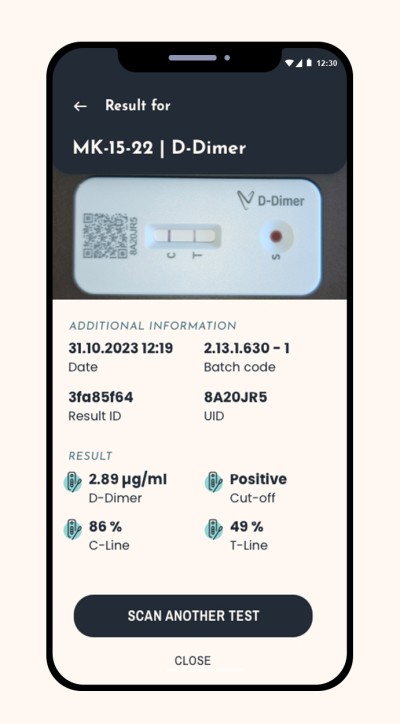
5. Test result
After the test is scanned and evaluated, the test result screen is shown. The test result can be qualitative, semi-quantitative or qualitative. In addition to the test result, an explanation such as
- an assessment of the quantitative values, e.g. {low | mid | high} or {insufficient | sufficient}
- or recommendations, e.g. consult a professional, use a supplement
can be provided, which is especially helpful for non-professional users.
A history of the scanned tests is maintained on the smartphone, which allows the user to keep track of tested parameters and to discover trends.
Alternative to hardware readers
The Flowify AI mobile application makes smartphones a viable alternative to hardware readers. It outperforms external readers in cost, range of products supported and ease of update. Using a smartphone as a reader for rapid tests is an obvious way for a large-scale distribution and digitization of rapid tests (e.g., test result history, data sharing, etc.). The mobile application focuses on creating a positive user experience. It builds on the broad availability of smartphones with sufficient computational power and good camera capabilities.
The reader solution is compatible with a wide range of rapid tests and can easily be adapted (e.g., additional features, improvements, etc.), which significantly reduces training and ramp-up time as a dedicated reader for each product is not required.
Additional benefits
- The app opens a communication channel between the manufacturer and the users of the tests. For instance, a manufacturer can initiate surveys or ask users to participate in usability studies.
- The app is a marketing tool as it can contain an overview of all products of a manufacturer. It is also possible to promote other products depending on the test results.
- The app is a data collection tool, which can be used to gain insights concerning the test usage. For instance, this can enable more precise production planning due to demand forecasts or targeted marketing campaigns.
